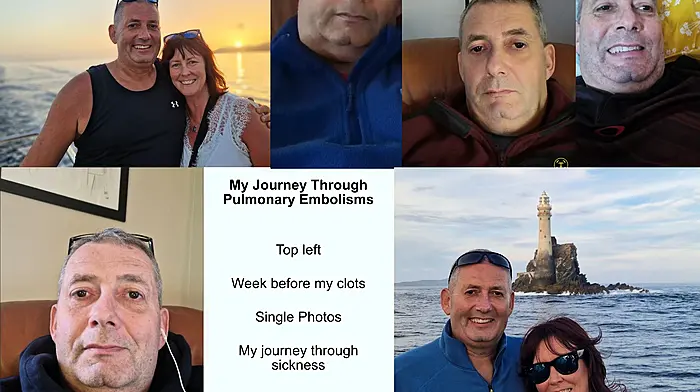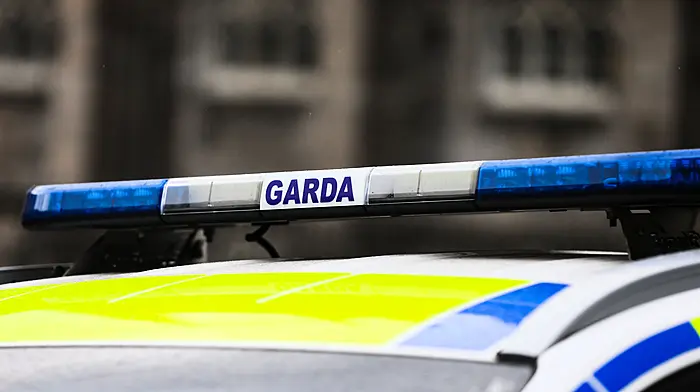EDITOR – I wish to reply to your query regarding the people in the recent Back in the Day photograph, published in The Southern Star on May 8th.
Mr Canniffe correctly recognised me. Pat taught in the Sacred Heart Secondary School, Clonakilty. I was educated there in the 50s, by the Sisters of Mercy and I was president of the Past Pupil’s Union on the night the photograph was taken.
As Pat stated, I trained as a primary teacher.
I started my teaching career in Knockskeagh School, outside Clonakilty. After four-and-a-half years, I transferred to the infant boys’ school in the town. I had 56 junior and senior infant boys in my class. I had seating for 38 boys, so the remainder sat on the floor! They changed places when the need arose.
The infant school and the senior boys school eventually amalgamated in 1995 and is now the renowned Scoil na mBuachaillí.
Also in the photo was my husband, Michael Minihan, also from Clonakilty. He was a sales representative with Deasy & Co, a famous mineral waters company in the town and a subsidiary of Guinness.
He was also a very keen golfer and well known in golfing circles, as a member of the Munster branch of the Golfing Union of Ireland. On my left is Fr Michael Cleary. He was related to the Cleary- Coughlans of Rossa Street, Clonakilty. He was a Curate in Clonakilty at that time and later became parish priest of Barryroe.
Please convey my sincere good wishes and admiration to my past pupil, Thomas Bluett, who undertook the mammoth task of digitising his Dad’s (Tony Bluett’s) vast collection of negatives and so has left us with a glorious, visual, archive of life in Clonakilty in the 60s and70s. I remember Tony Bluett turning up at all the social events in the town.
On a Monday morning, we rushed to his chemist shop window to admire the wedding photographs he had taken at the weekend and were now on display.
Tony would wait patiently, as we teachers arranged hundreds of schoolchildren, in a group or singly, for that most important school photograph.
I am delighted to know that Tony is still well and fit and I hope he is basking in the admiration we all have for him.
Tony was also a very keen ham radio operator and contacted fellow ham operators all over the world.
It is on my ‘bucket list’ that one day I will sit down – preferably with a friend – and look at all those photographs and name the people I remember and order a copy of the photograph that escaped me!
Thank you for printing your Back in the Day section.
You have opened up a treasure trove of nostalgic memories.
May the Lord embrace all those who are no longer with us.
Noreen Minihan,
Tawnies Lower,
Clonakilty.
Maynooth study into probation supervision
EDITOR – The experiences of people confined to institutions such as prisons, mother and baby homes, Magdalene laundries and industrial schools, have received significant attention in recent years. However, the historical experiences of people under probation supervision in the community have been largely forgotten.
The Histories of Probation project, led by Dr Louise Kennefick (Maynooth University) and Dr Deirdre Healy (University College Dublin) aims to uncover and document people’s experiences of probation supervision. The researchers would like to hear from anyone placed under probation supervision by the courts in the 1960s or 1970s, whether this was a probation order, community service order, suspended sentence or temporary release. They say the more people who participate, the more useful the findings will be. While the Probation Service has expressed support for the project, it is important to say that the study is not being conducted by or on behalf of the Probation Service, which means that all information will be kept confidential.
During the first phase of the project, the researchers interviewed probation officers about their experiences of working during the 1960s and 1970s. Probation officers described their role at this time as being to ‘advise, assist and befriend’ clients and as having a strong community and vocational ethos. Probation officers also spoke about a lack of state-funded rehabilitation services, which impacted on their ability to help clients build better lives or move away from crime.
To compensate, many innovated by introducing new programmes or drew on existing services in the community, including those provided by religious orders and voluntary lay organisations such as the Legion of Mary.
In 2019, the Probation Service received 1,481 referrals from courts in the Cork region. CSO statistics show that 30.4% of Cork residents placed under supervision in 2016 were reconvicted within one year of completing a supervision order.
Those who would like to participate in the study, or learn more, are invited to email [email protected] or call 01 474 7208.
Niamh Wade,
IRC Postgraduate Scholar,
Department of Law,
Maynooth University.
Early Christmas plea to An Post on stamp costs
EDITOR –From May 27th, the price of a postage stamp in Ireland increases from €1 to €1.10 and the cost of posting a letter to Britain and the rest of the World rises sharply from 30c from €1.70 to €2.
While acknowledging, but not totally accepting, the reasons given by An Post for these increases, I wish to make one early appeal to the state owned company.
Please make the cost of a stamp for letters and cards to Britain €1.10, the same as for Ireland for the month of December.
Keeping in touch with relatives and friends ‘across the water’ is so much more meaningful by a card with a greeting, a letter or photos compared with that of an email or other messages on social media. However, many people living in Ireland, who have relatives and friends in Britain, will find the €2 cost of posting a Christmas card in 2021 prohibitive at possibly the only time in a year they are in touch. For An Post to price letters to Britain at the ‘national rate’ from December 1 to 31 every year would, I contend be a good marketing exercise that would serve to generate additional business.
I would urge An Post, therefore, to give its customers some early Christmas cheer.
Leo McMahon,
Carrigaline.










